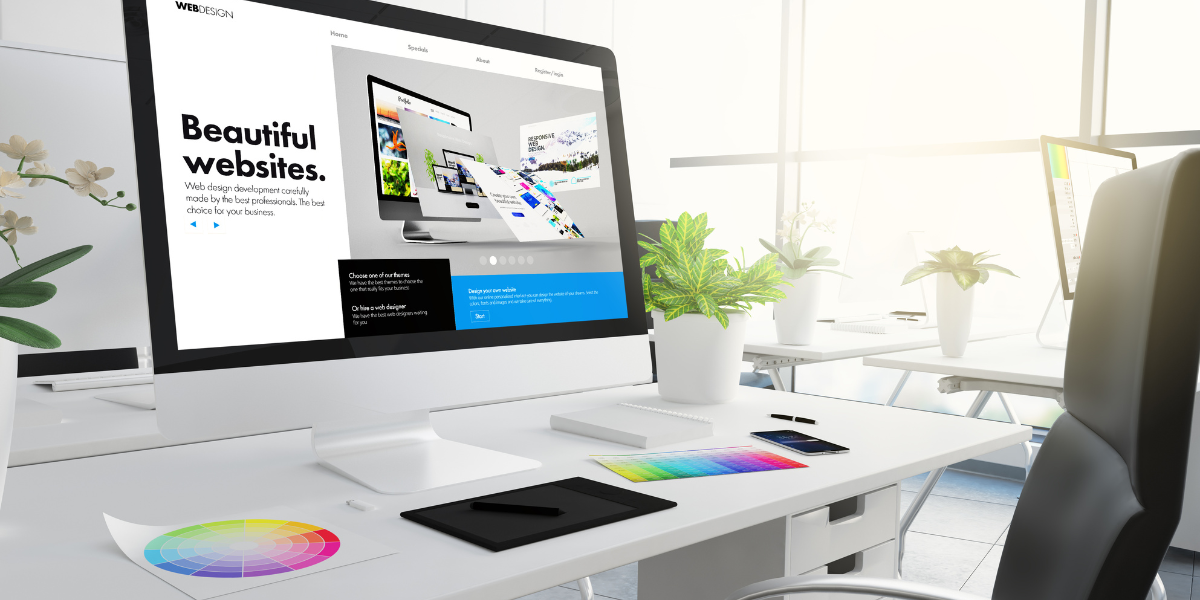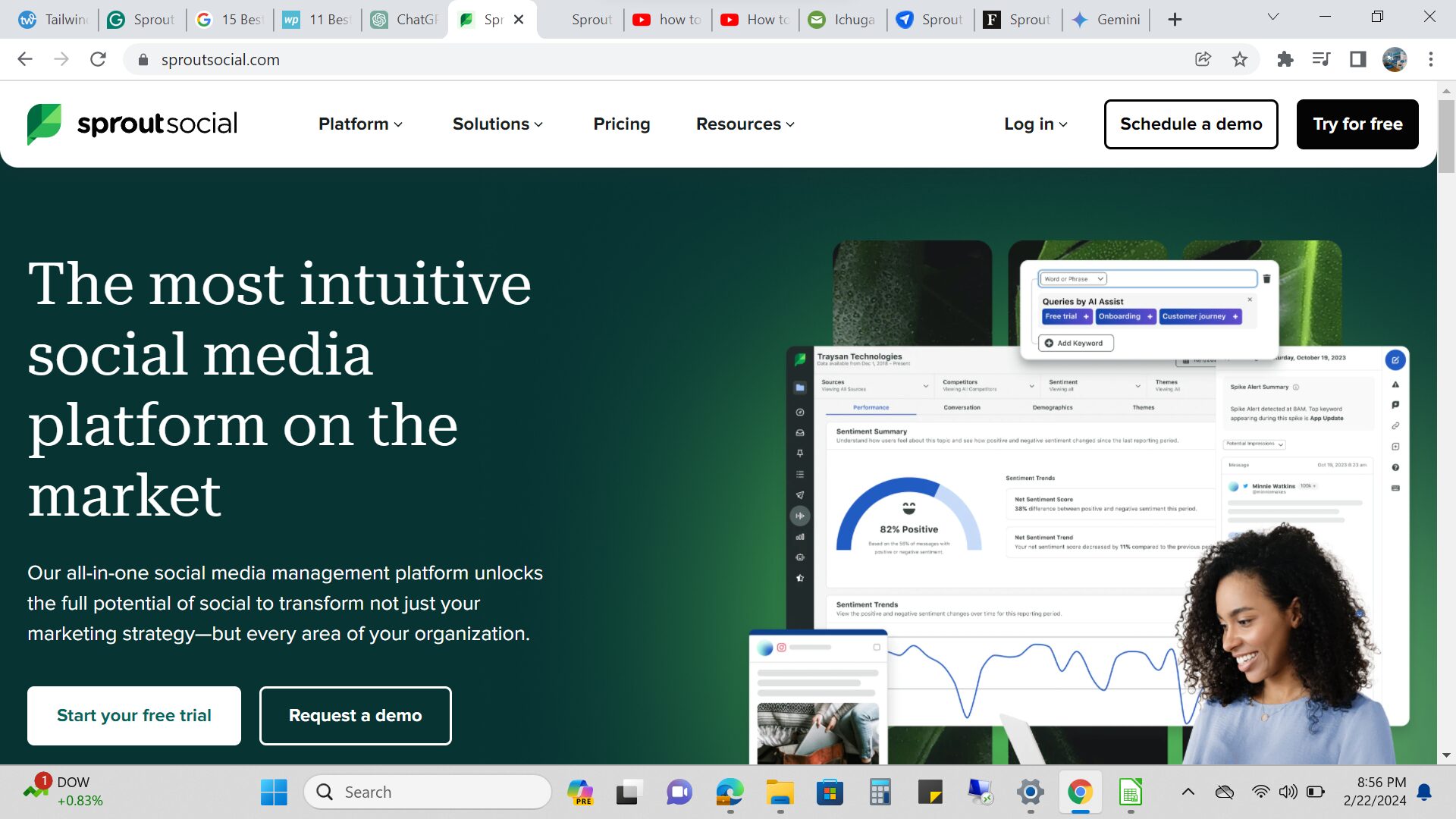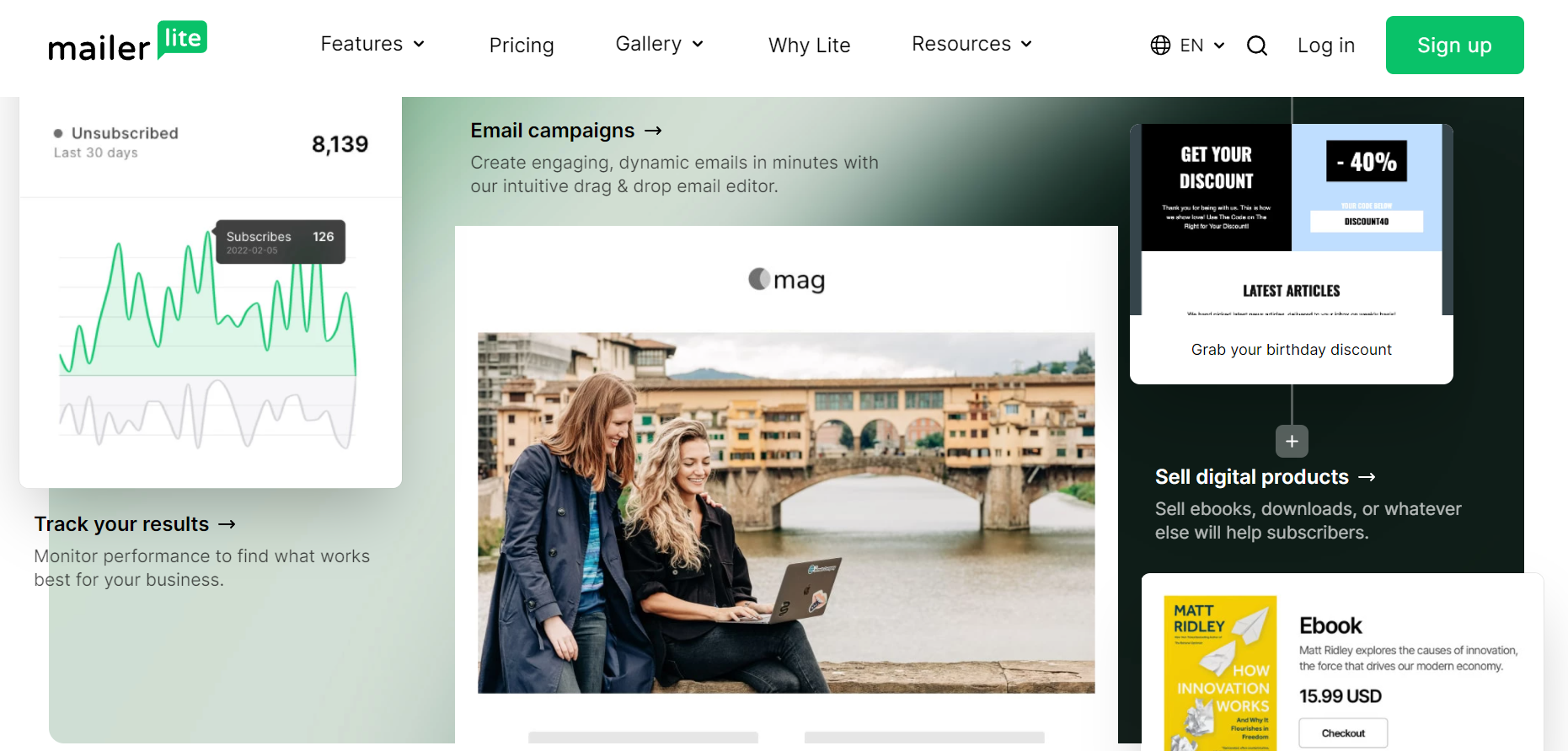Graphic design software refers to computer programs and applications that are used to create, manipulate, and edit visual content, such as images, illustrations, typography, and layouts.
These software tools are essential for graphic designers, illustrators, and other creative professionals to bring their artistic visions to life and communicate messages effectively through visual elements.
13 Best Graphic Design Software for Business
- Adobe Creative Cloud (Includes Photoshop, Illustrator, InDesign, etc.)
- CorelDRAW Graphics Suite
- Affinity Designer
- Canva for Business
- Sketch
- Inkscape
- GIMP (GNU Image Manipulation Program)
- Figma
- Vectr
- Gravit Designer
- Adobe Spark
- Crello
- Snappa
what are the best graphic design software in 2024?
1. Adobe Creative Cloud
Adobe Creative Cloud is a comprehensive suite of graphic design software that includes industry-standard applications like Photoshop, Illustrator, InDesign, and more. These tools offer a wide range of capabilities, from photo editing and vector illustration to layout design and typography. This suite is highly versatile, making it suitable for various business needs, including branding, marketing materials, web design, and more.
With Adobe Creative Cloud, businesses gain access to a vast array of tools that facilitate professional-level graphic design and content creation. From intricate illustrations to complex layouts, this software suite empowers businesses to deliver visually compelling materials that resonate with their target audiences.
2. CorelDRAW Graphics Suite
CorelDRAW Graphics Suite is a versatile graphic design software that combines vector illustration, layout design, photo editing, and typography tools. It is particularly suitable for businesses that require a broad range of design capabilities, such as creating logos, marketing materials, and visual content for various platforms.
CorelDRAW Graphics Suite offers businesses the flexibility to create eye-catching designs that can be adapted for both digital and print media. Its intuitive interface and comprehensive feature set make it a strong contender for businesses seeking an alternative to Adobe’s offerings.
3. Affinity Designer
Affinity Designer is a professional-grade graphic design software that focuses on vector illustration and design. It’s an excellent choice for businesses looking for powerful vector editing capabilities without the subscription model.
Affinity Designer provides businesses with the tools to create intricate vector graphics, illustrations, icons, and more. Its cost-effective pricing and focus on vector design make it an attractive choice for businesses aiming to produce high-quality visuals.
4. Canva for Business
Canva for Business is a user-friendly online graphic design platform that offers a wide variety of templates and tools for creating social media graphics, presentations, posters, and more. It’s ideal for businesses that need to quickly create visually appealing content without extensive design expertise.
Canva for Business empowers businesses to create professional-looking graphics without the need for advanced design skills. Its collaborative features make it a great choice for teams working on marketing campaigns and content creation.
5. Sketch
Sketch is a vector-based design tool primarily used for web and app design. It’s favored by businesses in the tech industry for creating user interfaces, icons, and interactive prototypes.
Sketch streamlines the design process for businesses aiming to create digital products with a focus on user experience. Its interface and tools cater to modern design trends in web and app development.
6. Inkscape
Inkscape is an open-source vector graphics editor suitable for businesses seeking a free alternative to commercial software. It’s widely used for creating logos, illustrations, and scalable graphics.
Inkscape offers businesses a cost-effective solution for vector design, making it an excellent choice for startups and smaller companies looking to create professional graphics without the financial commitment of premium software.
7. GIMP (GNU Image Manipulation Program)
GIMP is a free and powerful raster image editing software suitable for businesses on a budget. While it’s not as feature-rich as some premium options, it offers an extensive toolset for photo editing, retouching, and manipulation.
GIMP provides businesses with an accessible platform for photo editing and basic graphic design tasks. While it may not be as polished as commercial software, its feature set can cater to a wide range of design needs.
8. Figma – Collaborative Design in the Cloud
Figma has disrupted the design industry by offering a cloud-based design tool that enables real-time collaboration among designers and teams. This unique approach to design has positioned Figma as an essential tool for businesses seeking efficient and collaborative design processes.
Key Features
- Cloud-Based Collaboration: Figma’s cloud platform allows multiple users to collaborate on designs simultaneously, eliminating the need for file sharing and version control.
- Real-Time Editing: Designers can see changes made by others in real-time, making collaboration smoother and reducing design bottlenecks.
- Prototyping: Figma offers prototyping tools that enable the creation of interactive and animated prototypes, essential for user testing and design validation.
- Responsive Design: Figma’s responsive design features facilitate the creation of designs that adapt seamlessly to different screen sizes and devices.
- Design Libraries: Figma’s component and design system libraries ensure consistency across projects and enable the reuse of design elements.
- Plugins: Like Sketch, Figma supports a range of plugins that extend its functionality and integrate with other design and development tools.
Pros and Cons
Pros:
- Cloud-based collaboration streamlines teamwork and eliminates versioning issues.
- Real-time editing enhances efficiency and creativity.
- Suitable for both UI/UX design and general graphic design projects.
- Web-based nature allows cross-platform accessibility.
- Constant updates and improvements based on user feedback.
Cons:
- Internet connection is necessary to access and work on designs.
- More complex projects might require higher-tier subscription plans.
- Learning curve for beginners, particularly those new to cloud-based design tools.
- Some advanced design features might be lacking compared to other professional design software.
In conclusion, Figma’s cloud-based and collaborative approach to design has transformed the way teams work together on design projects. For businesses focused on teamwork, efficiency, and real-time collaboration, Figma presents an innovative solution that aligns with modern work environments.
9. GIMP
GIMP (GNU Image Manipulation Program) is a versatile and free open-source alternative to paid image editing software. While it may not have the same recognition as some commercial software, GIMP’s capabilities make it a valuable tool for businesses seeking cost-effective image editing solutions.
Key Features
- Image Editing Tools: GIMP offers a wide range of tools for retouching, color correction, and image manipulation, comparable to commercial software.
- Layer Support: Like other advanced image editors, GIMP supports layers, allowing for non-destructive editing and complex design compositions.
- Customizable Interface: GIMP’s interface is customizable to suit individual workflows, providing flexibility for designers.
- Extensions and Plugins: The software supports extensions and plugins that enhance its functionality, similar to commercial alternatives.
- Cross-Platform: GIMP is available for Windows, macOS, and Linux, ensuring compatibility across different operating systems.
- Free and Open Source: GIMP’s open-source nature means it’s freely available, making it an economical choice for businesses.
Pros and Cons
Pros:
- Cost-effective alternative to commercial image editing software.
- Comparable image editing capabilities, suitable for basic to advanced editing tasks.
- Active community creating plugins, scripts, and tutorials for extended functionality.
- Cross-platform compatibility allows flexibility in choosing operating systems.
Cons:
- Learning curve for beginners, especially those new to image editing software.
- Some advanced features may be missing or less polished compared to commercial counterparts.
- User interface might feel less intuitive for those accustomed to other software.
- Lacks the extensive support and resources available for commercial software.
In conclusion, GIMP’s powerful image editing capabilities and cost-effectiveness make it a valuable tool for businesses looking for a free and open-source alternative to commercial image editing software. While it might not offer the same level of refinement as paid software, GIMP’s capabilities can meet the needs of businesses seeking professional image editing without the hefty price tag.
10. Affinity Designer
Affinity Designer is a powerful vector design software that has gained recognition for its professional-grade features and affordable pricing. As a versatile tool for both graphic and UI/UX design, Affinity Designer provides businesses with the tools they need to create stunning visuals.
Key Features
- Vector Design Excellence: Affinity Designer’s vector-based approach ensures high-quality designs that can be scaled infinitely without losing clarity.
- Artboards and Constraints: The software offers artboards for creating multiple design variations, and constraints for responsive design.
- Pixel-Perfect Control: Affinity Designer allows for pixel-level control, making it perfect for both vector and raster graphic projects.
- UI/UX Design Tools: The software includes tools for creating icons, user interfaces, and interactive prototypes, catering to modern design needs.
- Advanced Pen and Node Tools: Affinity Designer’s precise pen and node tools enable intricate path editing and complex shapes.
- Affinity Ecosystem: Affinity Designer is part of the broader Affinity ecosystem, which includes Affinity Photo and Publisher, enhancing overall workflow.
Pros and Cons
Pros:
- Affordable one-time purchase price compared to subscription-based software.
- Professional vector and raster design capabilities.
- UI/UX design tools make it versatile for different design projects.
- Frequent updates introducing new features and improvements.
Cons:
- Learning curve for beginners, especially those new to vector design software.
- Smaller user community compared to more established design software.
- Lacks the extensive third-party resources available for more widely used software.
In conclusion, Affinity Designer’s combination of vector and raster design tools, along with its competitive pricing, makes it a strong contender for businesses seeking a comprehensive design solution. Whether it’s creating logos, illustrations, or user interfaces, Affinity Designer’s capabilities can help businesses achieve their design goals.
11. Vectr
Vectr is a user-friendly vector graphics software designed for simplicity and accessibility. With its intuitive interface and collaborative features, Vectr is a great option for businesses looking to create basic vector designs without the complexity of more advanced software.
Key Features
- Simple Interface: Vectr’s interface is designed to be user-friendly, making it a suitable choice for beginners and those new to vector graphics.
- Real-Time Collaboration: The cloud-based nature of Vectr enables real-time collaboration, allowing teams to work on designs together.
- Basic Vector Tools: Vectr offers essential vector tools like shapes, text, and paths for creating simple designs and illustrations.
- Web-Based: Vectr can be accessed directly from a web browser, eliminating the need for installations and allowing cross-platform use.
- Offline Mode: Vectr offers an offline mode for users who prefer working without an internet connection.
- Free to Use: Vectr is free to use, making it a cost-effective option for businesses with limited design needs.
Pros and Cons
Pros:
- Easy learning curve, suitable for beginners and casual designers.
- Real-time collaboration features improve teamwork and communication.
- Web-based access ensures compatibility across devices and operating systems.
- Free to use, making it a budget-friendly option for basic vector design.
Cons:
- Limited capabilities compared to more robust vector design software.
- Not suitable for complex illustrations or professional-grade graphic design.
- Lack of advanced features and tools for intricate designs.
- May not meet the needs of businesses with advanced design requirements.
In conclusion, Vectr’s simplicity and ease of use make it an excellent option for businesses seeking basic vector design capabilities. While it may not offer the depth of features found in more comprehensive software, Vectr’s straightforward approach can be a valuable asset for simple design tasks and collaborative projects.
12. Gravit Designer
Gravit Designer is a versatile vector design software that stands out for its ability to work seamlessly across different platforms. With its intuitive interface and comprehensive set of features, Gravit Designer is a strong contender for businesses seeking a flexible design solution.
Key Features
- Cross-Platform Compatibility: Gravit Designer works on web browsers, Windows, macOS, Linux, and ChromeOS, allowing for consistent design experiences across devices.
- Vector and Raster Design: The software supports both vector and raster design, making it suitable for a range of design projects.
- Advanced Tools: Gravit Designer offers a variety of tools for vector drawing, path editing, typography, and more.
- Design Libraries: Users can create and store design components in libraries for easy reuse, enhancing design consistency.
- Real-Time Collaboration: Gravit Designer’s cloud-based nature enables real-time collaboration, streamlining teamwork.
- Free and Paid Versions: Gravit Designer offers both free and paid versions, allowing businesses to choose the level of functionality that suits their needs.
Pros and Cons
Pros:
- Cross-platform compatibility ensures flexibility in choosing devices and operating systems.
- Feature-rich toolset for both vector and raster design projects.
- Cloud-based collaboration supports real-time teamwork.
- Free version provides substantial design capabilities.
- Paid version offers advanced features at a competitive price.
Cons:
- Learning curve for beginners, especially those new to design software.
- User interface might feel less intuitive for those accustomed to other software.
- Lacks the extensive third-party resources available for more established software.
- Some advanced design features may be missing compared to more robust software.
In conclusion, Gravit Designer’s cross-platform compatibility and robust feature set make it a solid option for businesses seeking a versatile design solution. Whether it’s creating vector illustrations, web graphics, or collaborative projects, Gravit Designer offers a platform to bring creative ideas to life.
13. Crello
Crello is a user-friendly graphic design tool that aims to simplify the design process for businesses and individuals without extensive design experience. With its ready-to-use templates and easy-to-use features, Crello offers a quick and accessible solution for creating visuals.
Key Features
- Template Library: Crello boasts a vast library of customizable templates for various design projects, saving time and effort.
- User-Friendly Interface: The platform’s intuitive drag-and-drop interface enables users to create designs without a steep learning curve.
- Easy Customization: Crello’s tools allow for simple customization of templates, making it suitable for those new to design.
- Stock Assets: The platform provides access to a collection of images, icons, and illustrations to enhance designs.
- Social Media Designs: Crello specializes in social media graphics, offering templates tailored for various social platforms.
- Collaboration and Sharing: Crello supports collaboration and sharing features, enabling teams to work together on designs.
Pros and Cons
Pros:
- Easy to use, making it ideal for beginners and non-designers.
- Template library provides inspiration and saves time.
- Specialized in social media graphics, streamlining social media marketing efforts.
- Affordable pricing, with a free version available.
- Collaboration and sharing features improve teamwork.
Cons:
- Limited customization for certain templates.
- Might lack advanced features for complex design projects.
- Template-based approach might lead to designs looking generic.
- Not suitable for advanced graphic design tasks.
In conclusion, Crello’s user-friendly approach and focus on ready-made templates make it a valuable tool for businesses seeking quick and simple graphic design solutions. While it may not offer the advanced features of more complex software, Crello’s ease of use can help businesses create visually appealing content for their marketing efforts.
What to consider when choosing graphic design tools
When choosing the best graphic design software for your needs, there are several factors to consider:
- Functionality and Features: Different software tools offer varying levels of functionality and features. Consider what specific tasks you’ll be performing most frequently and ensure that the software has the necessary tools for those tasks. Common features include photo editing, vector illustration, typography, layout design, 3D modeling, and more.
- Skill Level: Some graphic design software is better suited for beginners, while others cater to more advanced users. Choose software that matches your skill level to avoid feeling overwhelmed or underutilizing the software’s capabilities.
- Compatibility: Ensure that the software is compatible with your operating system (Windows, macOS, Linux) and hardware specifications. Compatibility also extends to file formats – the software should support the file types you commonly work with.
- Ease of Use: User interface and ease of use are important factors, especially for beginners. A well-designed and intuitive interface can significantly speed up your workflow and reduce the learning curve.
- Learning Resources: Look for software that offers ample learning resources such as tutorials, documentation, online courses, and a supportive community. Learning resources can help you master the software more effectively.
- Price and Licensing: Graphic design software comes in various pricing models, including one-time purchase, subscription, or even free/open-source options. Consider your budget and the long-term cost of using the software.
- Industry Standards: Research the industry standards and popular software used by professionals in your field. Using software that is widely accepted in the industry can make collaboration and file sharing easier.
- Workflow Integration: If you’re working with other software tools (such as Adobe Creative Cloud or 3D modeling software), consider whether the graphic design software can seamlessly integrate with your existing workflow.
- Performance: Some graphic design tasks, especially those involving high-resolution images or complex designs, can be resource-intensive. Make sure the software runs smoothly on your hardware without significant lag or crashes.
- Updates and Support: Regular updates from the software developer can bring new features, bug fixes, and improvements. Good customer support is also crucial in case you encounter any technical issues.
- Customization: Check if the software allows you to customize settings, shortcuts, and interface elements to match your preferences and working style.
- Output Options: Consider the variety of output formats the software supports, including print-ready files, web graphics, social media images, and more.
- Community and Networking: Software with a strong user community can provide networking opportunities, support, and inspiration from other designers.
Key takeaway on Graphic Design Tools
Selecting the right graphic design tool for your business involves a careful consideration of factors such as functionality, skill level, budget, and specific design needs.
Whether you choose industry giants like Adobe Creative Cloud, budget-friendly options like Canva for Business, or specialized tools like Affinity Designer and Sketch, each of these tools brings its unique strengths to the table.
Ultimately, the best graphic design tool for your business depends on your unique requirements, so take the time to explore your options and choose the one that aligns with your creative vision.
FAQs on the Best Graphic Design Tools
- What is the best graphic design tool for beginners?
- Canva for Business is an excellent choice for beginners due to its user-friendly interface, extensive template library, and low learning curve.
- Which graphic design tool is the most cost-effective for startups?
- Inkscape and GIMP are both open-source options that provide powerful design capabilities at no cost, making them great choices for startups on a budget.
- What graphic design tool is best for web and app design?
- Sketch is a preferred tool for web and app design, offering features tailored to the needs of designers creating digital interfaces.
- Are there any free alternatives to Adobe Creative Cloud?
- Yes, Inkscape, GIMP, and Canva (with limited features) are free alternatives to Adobe Creative Cloud for specific design needs.
- Which tool is recommended for professional graphic designers?
- Adobe Creative Cloud is widely regarded as the industry standard and is often the choice for professional graphic designers due to its comprehensive features and support resources.
- Is Affinity Designer a suitable alternative to Adobe Illustrator?
- Yes, Affinity Designer is considered a strong alternative to Adobe Illustrator, offering robust vector editing capabilities and a one-time purchase pricing model.
- What are the benefits of using Adobe Spark for design projects?
- Adobe Spark is designed for quick and easy creation of social media graphics, web stories, and short videos, making it ideal for businesses looking to produce engaging visual content rapidly.
- Can I collaborate with team members using these tools?
- Yes, many graphic design tools, such as Adobe Creative Cloud, Canva for Business, and Gravit Designer, offer collaboration features that enable team members to work together on design projects.
- Which tool is best for print design, such as creating brochures and posters?
- Adobe InDesign, part of Adobe Creative Cloud, is a preferred choice for print design projects, offering tools specifically tailored to creating layouts for brochures, posters, and other print materials.
- What tool should I choose if I need both vector and raster editing capabilities?
- Affinity Designer is a versatile tool that combines vector and raster editing capabilities, making it suitable for businesses that require both types of design work.
Selecting the best graphic design tool depends on various factors, including your business’s specific needs, your design skills, and your budget. Consider the tools’ features, ease of use, support resources, and alignment with your design objectives to make an informed decision that will empower your business to create visually appealing and impactful content.




